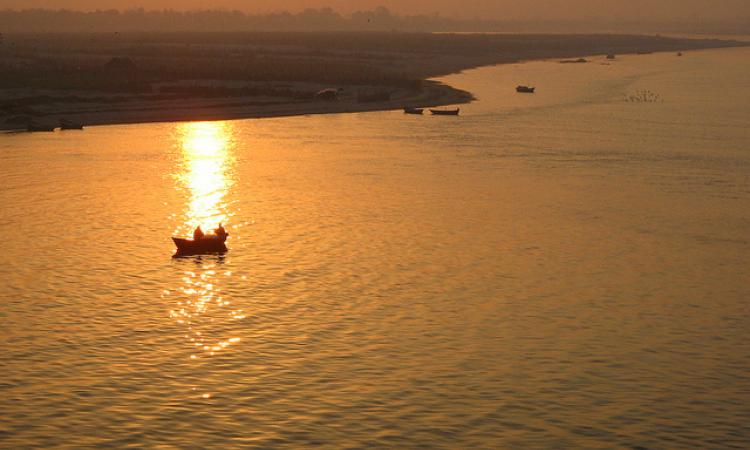
Ganga laden with high proportion of antibacterial agents: Study
As per the study Assessment of Water Quality and Sediment To Understand Special Properties of River Ganga conducted by the Nagpur-based National Environmental Engineering and Research Institute (NEERI), the Ganga river water has a significantly high proportion of organisms with antibacterial properties. The assessment compared the numbers of bacteriophages, a kind of virus that kill bacteria and are frequently found in proximity to bacteria, present in the Ganga, the Yamuna and the Narmada rivers. Although there isn't any evidence that the bacteriophage species were unique to the Ganga, they were approximately three times more in the samples of the Ganga than other rivers.
Delhi's Signature Bridge chokes Yamuna river
It has been five months since the inauguration of the Signature Bridge in Delhi but the debris dumped into the Yamuna river to carry out the construction of the bridge has not been removed. Experts have informed that the debris has combined with the soil and hardened, seriously affecting the flow of the river. Moreover, if the debris is not removed before the 2019 monsoon, it could even alter the river’s morphology by creating new islands. However, as per an officer from the Delhi Tourism and Transport Development Corporation (DTTDC) involved in the construction of the bridge, the debris removal has just been initiated and will be completed before the monsoon.
Government makes false assertion on drain clean-up
Under the Namami Gange programme launched in 2016, the union government took the initiative of Sismua drain-tapping in Kanpur at the cost of over Rs 60 crore. As per the government, the Sismua drain which discharged sewage into the Ganga river has been tapped but a report by IIT-Kanpur has found the government claims to be wrong. The sewage from the Sismua drain is diverted to two sewage treatment plants--Bhingawan STP and Jajmua STP. When IIT-Kanpur analysed the effluent discharged from the Bhingawan STP, it was found that the discharge was below the normal standard. Not just Sismua, several other drains in Kanpur that were supposed to be tapped under the Namami Gange initiative are still discharging directly into the Ganga river.
Marathwada's farm ponds may lead to groundwater crisis in the long run
With the beginning of Maharashtra's farm pond on demand scheme in 2016, the number of ponds in the region has shot up. Nearly 1.2 lakh ponds have been built under the scheme so far at a cost of around Rs 540 crore. Although these ponds benefit individual farmers allowing them to grow high-value crops, studies highlight that digging them may lead to overexploitation of groundwater resources. The ponds that are meant to be filled with rainfall runoff are being filled with borewell water and are also lined up with plastic, thereby stopping the percolation of water.
Study confirms sea is moving closer to Chennai
A recent study published by researchers from Anna University and National Water Centre, UAE University, has predicted that by the year 2100, a stretch of land from the mouth of Adyar near Foreshore Estate to Thiruvanmiyur on the South Chennai coast could be underwater due to rising sea levels. Moreover, the seawater is expected to enter 40 metres into the land from the existing shore. The researchers carried out a simulation to understand the response of the groundwater table to rise in sea level till 2100 and studied three different scenarios. Based on the simulation, the researchers have come to the conclusion that there will be 1.5 sq km of inundation if sea levels continue to rise.
This is a roundup of important news published between April 17-23, 2019. Also read policy matters this week.